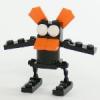
Controlling two circuit cubes with one LEGO remote
By
Asper, in LEGO Train Tech
-
Recently Browsing 0 members
No registered users viewing this page.

By
Asper, in LEGO Train Tech
No registered users viewing this page.